Country Romania Website catedralaneamului.ro Architect John Augustine | Denomination Eastern Orthodox Groundbreaking 15 December 2010 | |
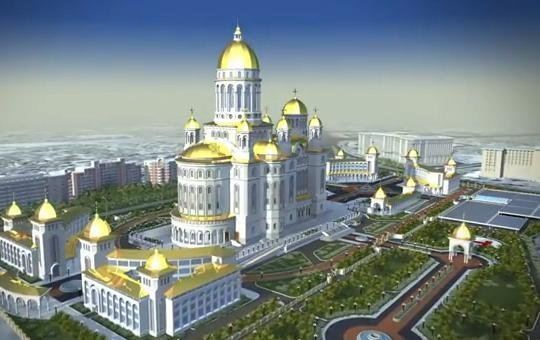 | ||
Location 4-60 13 September Street, Sector 5, Bucharest Dedication Ascension of the Lord
Saint Andrew the Apostle Relics held Saint John Chrysostom
Saint Nectarios of Aegina
Saint Andrew the Apostle Architectural style Byzantine Revival architecture Construction cost 200 million EUR (completely) Similar Romanian Patriarchal Cathedral, Palace of the Parliament, Antim Monastery, Dealul Mitropoliei, Carol Park | ||
Bucharest palace of the parliament romanian people s salvation cathedral
The Cathedral for the Salvation of the Romanian People (Romanian: Catedrala Mântuirii Neamului Românesc) is the common name used to refer to a future Romanian Orthodox cathedral currently under construction in Bucharest. It will be the patriarchal cathedral of the Romanian Orthodox Church, and the tallest Orthodox Christian church in the world when completed. The new cathedral will be dedicated to the Ascension of Christ and to Saint Andrew.
Contents
- Bucharest palace of the parliament romanian people s salvation cathedral
- Romanian people s salvation cathedral
- History
- Location
- Construction
- Architecture
- Opposition
- Cost and financing
- References
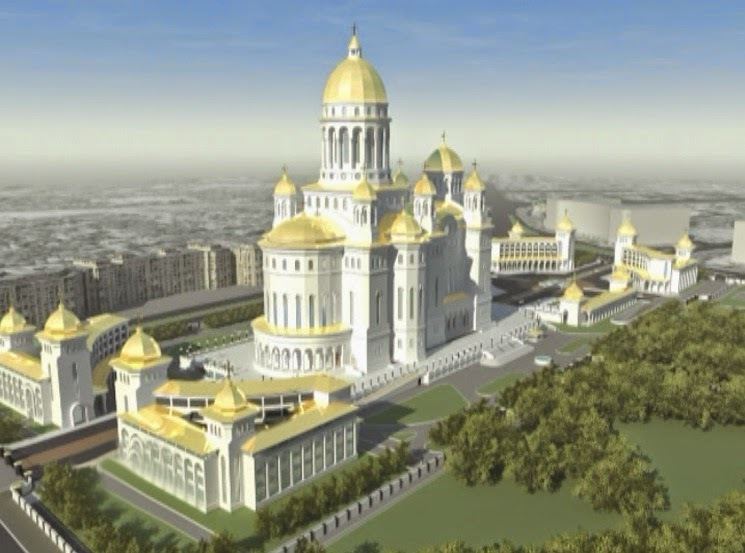
The plan of the cathedral complex includes a cathedral building; below the cathedral building, a soup kitchen with capacity for 1,000; two hotels; and parking for about 500 cars. The cathedral is designed with seating for approximately 6,000 worshipers, a greater than tenfold increase on the current patriarchal cathedral.
Romanian people s salvation cathedral
History
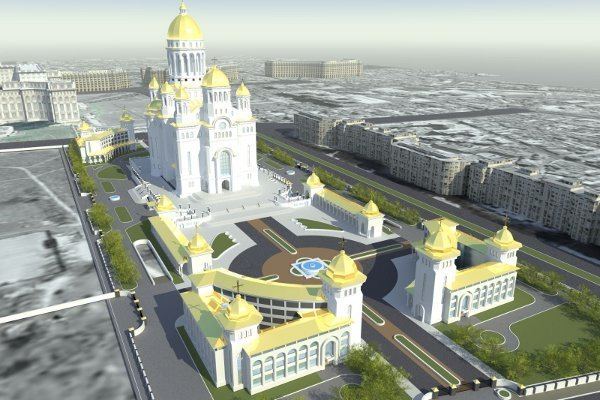
The earliest idea of a national cathedral came about after the Romanian War of Independence (1877 - 1878). It would symbolise the victory of Orthodoxy against the Ottoman Muslims. The idea was shelved for lack of consensus on design, location and funding.
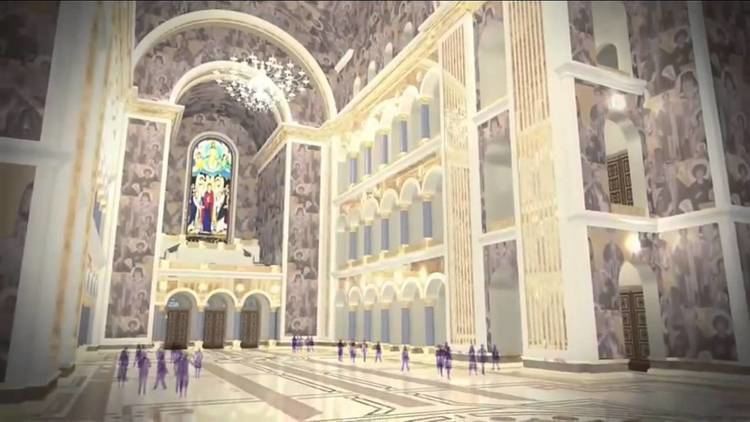
In 1920, King Ferdinand sent a letter to the Metropolitan bishop Miron Cristea, supporting the project, but this had no effect. In 1925, after the Romanian Orthodox Church became an independent patriarchate, Cristea suggested Carol Park as a site but his idea was defeated in favour of Bibescu Vodă Square. There, in 1929, a troiță (calvary) was raised. Lack of funds meant the construction was postponed and later forgotten.
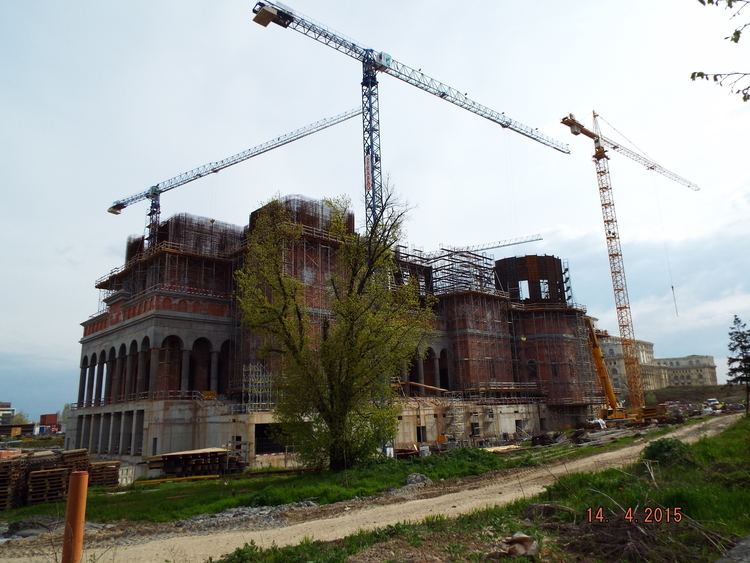
In September 1995, as the Romanian Orthodox Church celebrated its 70th anniversary of independence, Patriarch Teoctist proposed a new large cathedral on the scale of the newly rebuilt Cathedral of Christ the Saviour in Moscow. He envisioned a standing capacity of 10,000.
On 12 October 2004, the senate voted for the project, estimated to take 6 years.
On 27 and 28 November 2004, officials, up to 1,000 priests and worshippers from Bucharest and other cities gathered in Bucharest. The Holy Synod came into session. On 29 November 2007, Patriarch Daniel of Romania laid the foundation stone, gave his blessing and consecrated the site at Arsenal Hill.
Location
Three locations were proposed. In 2004, the historic area of Arsenal Hill on 13 September Avenue was selected. This area once contained two monasteries: the Mihai Vodă monastery and the Hermitage convent. There were also three parochial settlements: Albă Postăvari, Spirea Veche and Izvorul Tămăduirii which were destroyed or removed in the communist years.
The first proposed location was a park in Piaţa Unirii, where in 1998, without a proper authorization, Patriarch Teoctist laid the cornerstone of the Cathedral, in the presence of President Emil Constantinescu.
During the discussions which followed, Orthodox theologians warned that, according to church's doctrine, people who want to change the purpose of a plot of land where a church is destined to be built will be anathemized. In the end, the site was not appropriate for a large building because it was the point where two metro lines crossed the Dâmboviţa River, where it was channeled underground.
The Orthodox Church next proposed Carol Park as a site, and in 2004, the Năstase government gave 5 hectares of the park to the Romanian Orthodox Church, so that the cathedral could be built in place of the Tomb of the Unknown Soldier in Bucharest and the Mausoleum of Communist Heroes. The Architects' Union of Romania opposed the site, arguing that it went against certain national and international laws regarding environmental protection, architecture and the protection of monuments.
Following protests by local Bucharesters and opposition in the press, as well as conflicts with Traian Băsescu, the Mayor of Bucharest, the proposed site was abandoned. A new site, Izvor Park, close to the Palace of the Parliament was suggested. The government of Romania granted the Church 11 hectares (27 acres) of land at this site. The Church then planned to use 5 hectares (12 acres) of the land to construct the new cathedral. On 29 November 2007, a new cornerstone was laid by Patriarch Daniel.
A 4,000 square metres (43,000 sq ft) plot has since been claimed by former owners of the land. (The land had been confiscated from them during the communist era).
Construction
On 15 December 2010, construction of the cathedral began. To build the cathedral will be used 100,000 m³ of concrete, 45,000 tons of rigid armature and about 25,000 tons of flexible armature, ten times more than a ten-storey block. Energy efficiency is assured by massive walls of resistance and brick used on the inside and outside of them. The cathedral is designed to withstand earthquakes of 8.5 on the Richter scale. As of May 2016, the cathedral is constructed in a proportion of 70%.
The superstructure is scheduled to be completed in 2018, while the consecration is scheduled to take place on 1 December 2018.
Architecture
The design of the new cathedral was debated by parties including the Romanian Senate and the Mayor of Bucharest. The winning design featured elements of architectural details from all the Romanian provinces and territories in an area that would make the cathedral complex one of the largest religious sites in the world. It was envisaged that 10,000 worshipers could stand in the main cathedral building and the whole complex could accommodate 125,000 visitors over an area of 11 hectares.
The cathedral would be is 126 metres (413 ft), width 68 metres (223 ft) and height 127 metres (417 ft) (132m from ground level). The planned "zero point" section is 7,500 square meters. The main building (three floors) would be elevated 7 metres (23 ft) with the basement area extending to 17 metres (56 ft) below the ground level. The first two levels form a main hall with a height of 11 meters, where can participate 3,000 standing worshippers. The planned ground area is larger (152m by 92m / 13,668 square meters), divided into spaces including a main hall, other halls and rooms for events; an icon and religious clothing shop; a workshop (for carpentry, upholstery and metal work for example); a museum, gallery-exhibition, liturgical performance media shop; as well as storage rooms, a refectory, parking access, cultic objects and an employees rooms.
Opposition
The sheer size of the building drew criticism from various sources, including the French newspaper Le Figaro, which named it "a pharaonic project" and "worthy of the megalomania of Nicolae Ceauşescu". Alexandru Paleologu called for the cathedral project to be stopped. He compared it to the Soviet-inspired Casa Scânteii and the House of the People, and argued "The cathedral is a catastrophic, fatal kitsch (...) an ecclesiastical Ceauşescuism (...) and parasitical, immoral and impertinent". Cristian Tudor Popescu, a journalist called the cathedral a "God mall". He said it was not churches, either big nor small, that Romania was lacking.
The Romanian Orthodox Church's answer to such criticism was that the new cathedral would not imitate the gigantic buildings of the communist era, but would "correct them, through a decent and harmonious volumetry".
Cost and financing
In 2006, Evenimentul Zilei estimated the cost of the new cathedral to be more than €500 million, including the price of the land. In 2007, Patriarch Daniel estimated the cost of the building, excluding the land, to be approximately €400 million. In 2008, Le Figaro estimated the cost to be €1 billion.
In 2007, the government announced it would donate 30 million lei (€8 million) towards the construction of the new cathedral. The parliament legislated that a further half of the cost of the Cathedral would come from the state. This act was criticised. Daniel Dăianu, a Liberal European MP suggested it was populist spending and funds would come from other areas of spending. Remus Cernea, head of the Solidaritatea pentru libertatea de conştiinţă Association complained that funding of the cathedral with public money discriminated against others.
In 2013, the cathedral construction costs were estimated at 400 million lei. In 2015, five years after construction works started, the total cost for the cathedral structure without finishes was re-estimated at €91 million.
